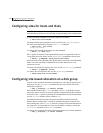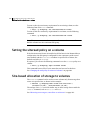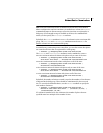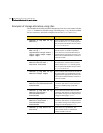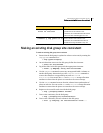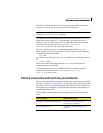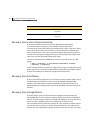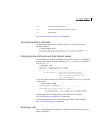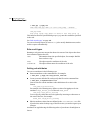
441Administering sites and remote mirrors
Failure scenarios and recovery procedures
site state to ACTIVE, and initiates recovery of the plexes. When all the plexes
have been recovered, the plexes are put into the ACTIVE state.
Note: vxsited does not try to reattach a site that you have explicitly detached
by using the vxdg detachsite command.
The automatic site reattachment feature is enabled by default. The
vxsited
daemon uses email to notify root of any attempts to reattach sites and to
initiate recovery of plexes at those sites. To send mail to other users, add the
user name to the line that starts
vxsited in the /etc/init.d/
vxvm-recover startup script, and reboot the system.
If you do not want a site to be recovered automatically, kill the vxsited
daemon, and prevent it from restarting. To kill the daemon, run the following
command from the command line:
# ps -afe
Locate the process table entry for vxsited, and kill it by specifying its process
ID:
# kill -9 PID
If there is no entry in the process table for vxsited, the automatic site
reattachment feature is disabled.
To prevent the automatic site reattachment feature from being restarted,
comment out the line that starts
vxsited in the /etc/init.d/
vxvm-recover startup script.
Failure scenarios and recovery procedures
The site reattachment daemon will provide automatic reattachment of detached
sites. See “Automatic site reattachment” on page 440. This section describes the
procedures that you can follow if automatic reattachment does not take place.
For example, this can happen if you have disable automatic reattachment, or if
you manually detach a site.
Possible failure scenarios and recovery techniques are listed in the following
table:
Failure scenario Recovery technique
Disruption of network link between sites. See “Recovery from a loss of site
connectivity” on page 442.
Failure of hosts at a site. See “Recovery from host failure” on
page 442.




